How to Raise Handlebars on Trek Mountain Bike
Last Updated on March 10, 2022
Trek is one of the biggest and most popular bike manufacturers in the globe. And there’s a good chance you might ride one!
If so, you might have asked yourself how to raise handlebars on Trek mountain bike . Well, you’ve just found the perfect place.
Because here, we’ll show you the right way on how to raise handlebars on Trek mountain bike . We’ll also tell you the tools needed and some tips to adjust your handlebar.
Table of Contents

Tools needed
- Torque wrench
Related: What Mountain Bike Tools Do I Need
How to add headset spacers?
The best way to raise your bike’s handlebar is to add spacers. The first thing to do is to place your bike on your workstation stand.
Make sure that the wheels are firm on the ground. Then slowly loosen the clamp bolts on your stem’s rear area. Add a bit of grease on the top cap’s bolt. This is important to avoid seizing especially if you always ride on gnarly trails.
The next thing to do is to remove the top cap. This is the one that sits directly above the stem’s top part. Then slowly slide the stem away from the steerer tube. You’ll see that it’s like how the bolt and top cap looks like.
Thread these into a star nut. This holds them in place and ensures it won’t topple off when hitting jumps and drops.
But you need to use a bung if you have a carbon handlebar. This is an expanding wedge which makes the adjustment process easier and more accurate.
Decide how many centimeters you’ll raise your handlebar. You need to add more spacers if you want to have a very high handlebar. You’ll usually need 2 or 3 additional spacers if you ride downhill trails.
This provides better maneuverability and control when tackling technical sections. Add a bit of grease so that the two surfaces won’t rub and damage each other. Then slowly slide the stem directly into your steerer tube.
Make sure there’s enough gap between your stem, spacer, and steerer tube. This gap usually measures around 3 to 5 mm. This ensures that there is enough space for the top cap headset to clamp back on your headset bearing.
It also allows the headset to preload. Then slowly palace the bolt and top cap on top of the stem. Tighten it until you feel some kind of resistance. But make sure it’s not too tight as this can break your stem. It’s best if you use a torque wrench to get the right tightness.
The next thing to do is to align your stem with your front wheel. This ensures that the handlebar is at your wheel’s right angle. It also makes it easier for you to straddle on the bike’s top tube. This makes your ride more controllable and comfortable, especially if you always ride downhill.
Get your torque wrench once you’ve aligned the stem and front wheel. Use the torque wrench to clamp the bolts back to the bar.
We recommend you set the torque around 5 to 8 Nm. This isn’t tight or loose, but just right. This is important because a very tight stem might break your handlebar especially if it’s carbon.
Then check the adjustment of your headset. Hold your front brake with one hand, while the other is on your headset. Then slowly rock the handlebar sideways and back and forth.
Get a feel of the rocking motion to see if it’s installed properly. Loosen the clamp bolts again if you feel any rocking motion. Then tighten the top cap bolt again. You’ll usually need just a quarter turn. Then use your torque wrench to tighten the bolts again.
How to flip the stem on a Trek mountain bike?
The most popular way to raise your handlebars is to add spacers. But if these aren’t enough, then you can just flip the stem. This changes the bar height because the shape of the stem is upside down.
Note that most stems are in a positive position which creates an upward angle. But you can flip it so it goes the other way around. Unbolt the handlebar from the stem’s front part. Make sure that both your bike’s wheels are on the ground so it won’t move.
We also recommend putting it on a workstation stand to secure it in place. Remember the angle of the handlebar and brake lever. This is important so you can keep your preferred angle later.
Use masking tape to mark the handlebar and face plate’s original angle. This will help you get the correct angle when refitting. Then undo the bolts which connect the handlebar to the stem’s frontal section. Remove the faceplate of the stem.
Then slowly release the handlebar and let it gently drop to the side. Then follow the steps mentioned above on how to add spacers. Flip the stem that is off the bike and slide it back to its original place on the steerer tube.
Reinstall the handlebar and follow the original angle of the handlebar and brake lever. Tighten the stem to the recommended torque. This is usually around 5 to 8 Nm. Make sure that all bolts are tightened evenly so there’s no gap.
This is very important, so your cockpit won’t rattle and get loose when you jump your bike . There should also be an even gap from top to bottom. The handlebar is pinched if the gap isn’t even. This can damage the bars if left unfixed in the long run.
Knowing how to raise handlebars on Trek mountain bike is important. Not only does this ensure that you are comfortable on your ride. But it also gives better control and safety.
The steps on how to raise handlebars on Trek mountain bike isn’t really difficult. In fact, it’s easy as long as you follow the right steps!
Just remember to take good care of your bike, use the right tools, and ride safely. When you do, then you’ll surely have a fun time riding your Trek mountain bike.
How to Change Handlebar Grips on a Mountain Bike
How to Cut Carbon Handlebars
How to Measure Mountain Bike Handlebars
This site is reader-supported and we earn commissions if you purchase products from retailers after clicking on a link from our site. As an Amazon Associate, I earn from qualifying purchases.
© MTB Rules
Privacy Policy | Terms Of Service

Unleash Your Inner Geek on a Bike
How to Raise the Handlebars on a Trek Bike
Shahed Parvej

Affiliate Disclaimer
As an affiliate, we may earn a commission from qualifying purchases. We get commissions for purchases made through links on this website from Amazon and other third parties.
As an Amazon Associate, I earn from qualifying purchases.
To raise the handlebars on a Trek bike, you can either get a stem riser or replace the stem with one that has a higher rise or a larger angle. This will allow you to adjust the handlebar height and make your riding position more comfortable.
Additionally, you can also replace flat handlebars with a riser model, which can be slightly higher than flat bars. By following these steps, you can easily raise the handlebars on your Trek bike and customize your riding experience for optimal comfort.
Step 1: Assessing Your Handlebar Height
To raise the handlebars on a Trek bike, start by assessing the handlebar height. This can be done by adjusting the stem or using a stem riser. Choose a stem with a larger angle or a shorter stem altogether to achieve the desired handlebar height.
Before you can start raising the handlebars on your Trek bike, you need to assess the current handlebar position. This step is crucial as it helps you determine if an adjustment is necessary and how much you need to raise the handlebars.
Checking The Current Handlebar Position
To check the current handlebar position, follow these steps:
- Stand in front of your bike and ensure it is on a level surface.
- Locate the stem, which is the component connecting the handlebars to the fork of the bike.
- Note the position of the stem in relation to the steerer tube. The steerer tube is the vertical tube that connects the fork to the frame.
- Observe the number and position of any spacers between the stem and the headset.
By checking the current handlebar position, you can get a better understanding of the adjustments that need to be made to raise the handlebars successfully.
Identifying The Need For Adjustment
After checking the current handlebar position, you can now identify whether an adjustment is needed. Here are a few signs that indicate the need to raise the handlebars:
- You experience discomfort or pain in your wrists, shoulders, or back while riding.
- Your riding posture feels too hunched over, causing strain on your neck.
- Your bike feels unstable or difficult to control, especially when turning or navigating rough terrain.
- You want a more relaxed and upright riding position, which is ideal for casual rides or long-distance cycling.
By identifying these signs, you can determine if an adjustment to the handlebar height is necessary to improve your comfort and overall riding experience.
Step 2: Tools And Materials Needed
To raise the handlebars on a Trek bike, you may need tools such as a stem riser or a stem with a higher angle or shorter length. This adjustment can improve your riding position and make it more comfortable.
Step 3: Loosening The Stem Bolts
To raise the handlebars on a Trek bike, start by loosening the stem bolts. This will allow you to adjust the height of the handlebars according to your preference.
Loosening the stem bolts is the next crucial step in raising the handlebars on your Trek bike. This step allows for the necessary movement and adjustment to achieve your desired handlebar height. Follow these simple instructions to ensure a smooth and successful process:
Preparing The Bike For Handlebar Adjustment
- Find a suitable workspace where you can comfortably work on your bike.
- Ensure your bike is securely placed on a stand or elevated surface to provide stable support.
- Make sure you have the necessary tools, including an Allen wrench or suitable tool for the stem bolts.
Loosening The Bolts To Allow Movement
Now that you’ve prepared your bike for handlebar adjustment, it’s time to proceed with loosening the stem bolts. Follow these steps:
- Locate the stem bolts on the top of your bike’s steerer tube. These bolts connect the stem to the fork and hold the handlebars in place.
- Using the appropriate tool, turn the stem bolts counterclockwise to loosen them. Be sure to loosen each bolt evenly to allow for a balanced adjustment.
- Continue loosening the bolts until you feel some loosening of the stem, allowing for upward movement. Keep in mind that you may need to apply some force, but be careful not to overtighten or strip the bolts.
- Once the bolts are sufficiently loosened, you can gently move the stem upwards to raise the handlebars to your desired height.
Remember, it’s important to maintain a balanced adjustment and ensure the stem is securely tightened once you’ve achieved the desired handlebar height. This will provide stability and safety while riding your Trek bike.
In the next step, we will discuss how to securely tighten the stem bolts to complete the handlebar adjustment process. Stay tuned!
Step 4: Adjusting The Handlebar Height
Adjusting the handlebar height on a Trek bike is a simple process that can improve your riding comfort. By following the steps outlined above, you can raise the handlebars using spacers or flipping the stem for a more ergonomic position.
Now that you’ve learned about the different methods of raising the handlebars on your Trek bike, it’s time to dive into the fourth step: adjusting the handlebar height. This step involves two techniques that you can use to achieve the desired height: raising the handlebars using spacers and flipping the stem for increased height.
Raising The Handlebars Using Spacers
If you’re looking for a simple and cost-effective way to raise the handlebars on your Trek bike, using spacers is a great option. Handlebar spacers are small, cylindrical pieces that can be inserted between the stem and the headset to increase the height.
To raise the handlebars using spacers, follow these steps:
- Loosen the stem bolts using an Allen wrench.
- Gently lift the stem and handlebars upward to create some space.
- Place the desired number of spacers on top of the headset.
- Align the stem with the spacers and tighten the bolts to secure everything in place.
- Ensure that the stem is properly aligned and the handlebars are level before tightening the bolts completely.
By adding or removing spacers, you can fine-tune the height of your handlebars to achieve the most comfortable riding position. Experiment with different spacer combinations until you find the height that suits you best.
Flipping The Stem For Increased Height
If you’ve already reached the maximum height using spacers or want to explore other options, flipping the stem can provide further elevation for your handlebars. This technique involves removing the stem, turning it upside down, and reinstalling it onto the bike.
To flip the stem for increased height, follow these steps:
- Remove the stem from the headset by pulling it upward.
- Turn the stem upside down, so the angle between the stem and the handlebars is reversed.
- Reinsert the stem into the headset and align it with the desired height.
- Tighten the bolts to secure the stem in place.
Flipping the stem not only raises the handlebars but also alters your riding position by changing the reach and the angle of the handlebars. Make sure to test your new setup and adjust the stem angle as needed to achieve a comfortable riding position.
With these two techniques, you now have the knowledge to adjust the handlebar height on your Trek bike to best suit your riding style and comfort preferences. Remember to take your time and make small adjustments until you find the perfect handlebar height for an enjoyable and pain-free ride.
Step 5: Ensuring Proper Tightening
To ensure proper tightening of the handlebars on a Trek bike, follow these steps carefully and avoid any overused phrases. Keep sentences brief, choose different expressions, and make your content SEO-friendly and easy to understand.
Tightening The Stem Bolts Securely
Testing the stability of the handlebars, step 6: checking for comfort and fit.
To raise the handlebars on a Trek bike, follow these steps. First, loosen the stem cap and remove any spacer above the stem. Then, adjust the stem to your desired height and tighten the bolts. Finally, reassemble the stem cap and test for comfort and fit.
Making Adjustments For A Comfortable Riding Position
Once you have raised the handlebars to your desired height, the next step is to make further adjustments for a comfortable riding position. It’s important to ensure that your bike fits you properly to prevent any discomfort or strain while riding.
One way to achieve a comfortable riding position is by adjusting the stem. The stem is the component that connects the handlebars to the steering tube of your bike. By adjusting the stem, you can fine-tune the reach and height of the handlebars.
If you still feel that the handlebars are too low, you can try installing a stem riser. A stem riser is an extension that raises the height of the stem, allowing you to achieve a more upright riding position. Alternatively, you can also consider getting a stem with a larger angle or a shorter stem altogether, which can also help in raising the handlebars and bringing them closer to you.
Testing The Handlebar Height Before Finalizing
Before finalizing the handlebar height, it’s crucial to test and ensure that it feels comfortable and provides a good fit for your body. Here are a few things you can do to check the handlebar height:
- Take your bike for a short test ride around your neighborhood. Pay attention to how your body feels in relation to the handlebars. Are you able to maintain a relaxed and comfortable grip? Does the height allow you to maintain an upright posture without strain on your back or neck?
- Experiment with different handlebar positions. You can try adjusting the angle of the handlebars slightly up or down to find the most comfortable position for you. Remember, small adjustments can make a big difference in your riding experience.
- Consider your riding style and preferences. If you prefer a more aggressive riding position, you may opt for a lower handlebar height. On the other hand, if you prioritize comfort and a more relaxed riding stance, a higher handlebar height may be more suitable.
Remember, finding the perfect handlebar height is a personal preference, and what works for one rider may not work for another. It’s important to listen to your body and make adjustments accordingly. Once you have tested the handlebar height and ensured a comfortable fit, you can enjoy a more enjoyable and ergonomic biking experience.
Step 7: Additional Considerations For Trek Bikes
For those looking to raise the handlebars on their Trek bike, there are several additional considerations to keep in mind. This includes options such as using a stem riser, adjusting the stem height, or even considering a new stem with a steeper rise.
Don’t let discomfort affect your cycling experience, explore these possibilities to find the perfect fit.
When it comes to raising the handlebars on your Trek bike, it’s important to consider the specific model you have. Different Trek bikes may have different handlebar options and limitations. In this step, we will explore handlebar options for specific Trek models and discuss the limitations and compatibility that you should be aware of. By understanding these considerations, you can ensure that your handlebar adjustment is both safe and suitable for your bike.
Exploring Handlebar Options For Specific Trek Models
Each Trek bike model may have its own unique handlebar options. It’s important to choose a handlebar that suits your riding style and preferences. Here are some popular handlebar options for specific Trek models:
Understanding The Limitations And Compatibility
When raising the handlebars on your Trek bike, it’s important to be aware of the limitations and the compatibility of different components. Here are a few key considerations:
- Compatibility with stem: Ensure that the new handlebars are compatible with the stem of your Trek bike.
- Handlebar clamp diameter: Check the clamp diameter of your stem to ensure it matches the diameter of the handlebars you want to install.
- Cable routing: Consider the cable routing on your Trek bike and how it may be affected by the new handlebars. Ensure that the cables have enough length and can be properly routed.
- Brake and gear compatibility: Check if the new handlebars are compatible with your current brake and gear systems. Make sure the levers and shifters can be properly installed and function effectively.
Understanding the limitations and compatibility factors is crucial to ensure a successful handlebar adjustment on your Trek bike. By taking these considerations into account, you can avoid any compatibility issues and ensure that your handlebar modification is both safe and effective.
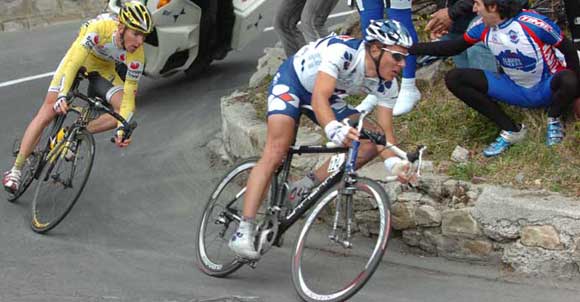
Credit: www.trekchicago.com
Frequently Asked Questions Of How To Raise The Handlebars On A Trek Bike
Can you raise the handlebars on a trek bike.
Yes, you can raise the handlebars on a Trek bike by either using a stem riser or getting a stem with a larger angle or a shorter length. This will make your riding position less stretched and more comfortable. Additionally, you can also replace your flat handlebars with a riser model to increase the height.
What Is The Problem With The Handlebars On A Trek Bike?
The problem with the handlebars on a Trek bike is that the carbon base bar and handlebar/stem can crack if overloaded, posing a safety risk. Trek has issued a recall for these products to ensure customer safety. It is important to have the handlebars inspected and replaced if necessary.
Can You Raise The Height Of Bike Handlebars?
Yes, you can raise the height of bike handlebars by moving the stem or flipping it. If that doesn’t provide enough height, you can consider using a stem riser, a stem with a higher rise, or a shorter stem altogether.
Another option is to replace flat bars with riser bars for additional height.
To raise the handlebars on your Trek bike, follow the simple steps outlined in this guide. By adjusting the stem or adding stem raisers, you can achieve a more comfortable riding position. Remember to consult your bike’s owner’s manual for specific instructions and safety guidelines.
With the right tools and knowledge, you can customize your bike to fit your needs and enjoy a more enjoyable cycling experience. Don’t forget to prioritize your safety while making any adjustments. Happy riding!
About the author

I’m Shahed Parvej, the proud owner and founder of this platform. As a passionate Bike Enthusiast, I’ve embarked on a journey to share my knowledge, experiences, and insights with fellow enthusiasts, newcomers, and everyone intrigued by the world of biking.
Leave a Reply Cancel reply
Your email address will not be published. Required fields are marked *
Save my name, email, and website in this browser for the next time I comment.
Latest posts

Discover the Ultimate Best Bike Brake in 2024 for Unbeatable Cycling Performance
As an Amazon Associate, I earn from qualifying purchases.Looking for the best bike brake in 2024? The shimano xtr m9100 disc brake offers top-notch performance, reliability, and precision, making it a standout choice for cyclists. The importance of a reliable bike brake cannot be overstated, especially when it comes to ensuring safety on the…

Can You Put 27 5 Wheels On A 29Er: Unveiling the Ultimate Upgrade
As an Amazon Associate, I earn from qualifying purchases.Yes, you can put 27.5 wheels on a 29er bicycle as long as the frame and brakes allow for the smaller wheel size. Swapping to smaller wheels can improve agility and maneuverability on rough terrain. It’s essential to consider the impact on the bike’s geometry, bottom…
What is a Wet Bike
As an Amazon Associate, I earn from qualifying purchases.A Wet Bike is a planing motorized watercraft that combines the features of a motorcycle and a jet ski. It is propelled by pump jets, similar to other personal watercraft. The original Wetbike was introduced by Spirit Marine and marketed as a “water motorcycle” with the thrill…
- More Networks

How To Raise The Handlebars On A Trek Bike
Trek is a well-known bike brand known for how well they work. One thing that makes Trek bikes so easy to ride is that the handlebar height can be changed. This lets riders find the one that fits their needs the best.
Many riders like Trek bikes because they are well-made and work well. You need to set the handlebars to the right height for the best ease, control, and posture while riding.
You want to know how to raise the handlebars on a trek bike? This article will show you to raise the handlebars on a Trek bike so that you can ride it more comfortably.
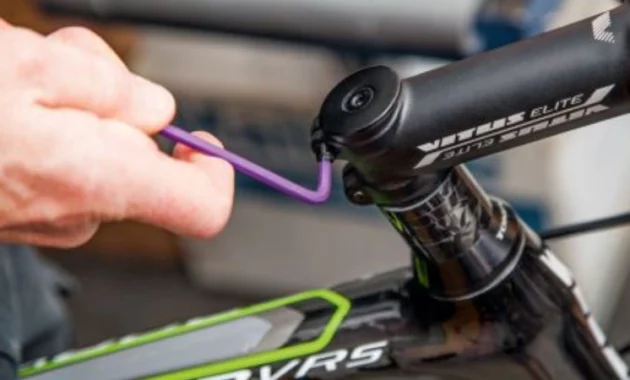
How To Determine The Appropriate Handlebar Height For A Trek Bike
Finding the right handlebar height for your Trek bike is important if you want to ride easily and healthily. Here are some steps that will help you figure out the right height for the handlebars:
Style and Preference : Consider your riding style and preferences when choosing handlebar height. Choose a lower handlebar height if you prefer a more active and aerodynamic ride. A higher handlebar height may be better for a more relaxed and upright position.
Body Mechanics and Flexibility : Consider your body’s flexibility when adjusting your handlebar height to avoid discomfort in your back, neck, and shoulders. Consider your arm height based on your flexibility, core strength, and any injuries or limitations you have.
Bike Fit Assessment : Give your bike a thorough fit exam. This can be done by talking to a skilled bike fitter or using online calculators or guides for a bike fit. These tools usually suggest an initial handlebar height based on your height, inseam length, torso length, and arm length.
Initial Adjustment : Based on the assessment or suggestions, start with a handlebar height that is on the low side. It’s always best to start with a little higher handlebars and then make changes as needed. This lets you fine-tune the setting based on how comfortable you are and how you like to ride.
Test Rides and Adjustments : Take a few test rides on your Trek bike with the handlebars at the starting height. Pay attention to any pain or strain in your body, especially in your neck, shoulders, and lower back. If you feel uncomfortable or like you can’t keep control of the bike, this could mean that the handlebars need to be changed.
Changes Made Gradually : Adjust the handlebars in small increments by moving them up or down about 5mm at a time. Test ride the bike after each adjustment to see how it affects your comfort and riding experience. Make small adjustments until you find the right height that gives you optimal ease, stability, and control.
How To Adjust Trek Bicycle Bars
Raising the handlebars is an easy job. Just read the steps to do the job like a professional:
Step 1: Gather The Required Tools
Before starting the handlebar adjustment process, make sure you have the following tools:
Allen wrench set : Depending on your bike’s specifications, different sizes may be needed.
Adjustable wrench : This may be necessary to loosen or tighten certain components.
Step 2: Evaluate The Existing Setup
Take a moment to analyze your current handlebar position. Identify the style of the handlebar stem on your Trek bike, as it will determine the specific steps required for adjustment. The two most common stem styles are quill stems and threadless stems.
Quill stems : These stems have a long vertical tube that slides into the bike’s fork steerer tube. They are secured in place with a single bolt at the top. To raise the handlebars on a quill stem, you will need to adjust the stem’s height.
Threadless stems : These stems consist of a horizontal steerer tube and a stem that clamps onto it. The stem height can be adjusted by adding or removing spacers and by repositioning the stem itself.
Step 3: Raising Handlebars On Quill Stems
If your Trek bike has a quill stem, follow these steps:
Loosen the bolt : Locate the bolt at the top of the stem. Use an appropriately sized Allen wrench or adjustable wrench to loosen the bolt. Turn it counterclockwise until it is loose enough to allow the stem to move.
Adjust the stem height : Gently lift the stem upwards to the desired height. Take note of the maximum height indicator line on the stem. Ensure that the stem remains aligned with the front wheel.
Tighten the bolt : Once you have set the desired height, tighten the bolt by turning it clockwise. Make sure it is securely tightened to prevent any movement or slippage during rides.
Test the adjustment : Give the handlebars a firm shake and apply moderate pressure to ensure they are properly secured. Make any additional adjustments if necessary.
Step 4: Raising Handlebars On Threadless Stems
If your Trek bike has a threadless stem, the process involves adjusting the stem’s position and possibly adding or removing spacers:
Evaluate spacer arrangement : Inspect the spacers positioned above and below the stem. If there are no spacers above the stem, proceed to step 2. If there are spacers above the stem, you will need to reposition them below it.
Loosen stem bolts : Locate the bolts on the side of the stem where it clamps onto the steerer tube. Loosen these bolts by turning them counterclockwise using an appropriately sized Allen wrench.
Adjust the stem height : Gently lift the stem to the desired height. If you need to add or remove spacers, slide them below the stem or lift them off the steerer tube, respectively.
Align the stem : Ensure that the stem is aligned with the front wheel. Verify that the gap between the stem and the top tube is equal on both sides.
Tighten the stem bolts : Once the stem is at the desired height and properly aligned, tighten the stem bolts by turning them clockwise. Start with a snug fit, and then gradually increase the tightness of each bolt in a crisscross pattern until they are securely tightened.
Test the adjustment : Similar to the quill stem adjustment, test the handlebars by shaking them and applying pressure. Confirm that everything is secure and there is no movement or slippage.
Properly adjusting the handlebars on your Trek bike is crucial for maintaining a comfortable and efficient riding position. By following the step-by-step instructions outlined in this essay, you can confidently raise the handlebars on both quill and threadless stems.
Remember to pay attention to safety, ensure all components are tightened correctly, and test the adjustments before embarking on your next cycling adventure. Enjoy your ride with elevated handlebars, providing you with a more enjoyable and ergonomic cycling experience.
Mike Anderson
Hello Dudes, Mike Anderson here! I am a freaky traveler who goes anywhere, on any kind of track or path with my bicycle. In that way Mehedi and Laura found me. And, I love to talk about the different types of cycling issues (almost about all Bikes) in my blog post.
How To Paint Spoked Motorcycle Wheels
Maxxis exo vs maxxis exo+ [which is better], leave a reply cancel reply.
Save my name, email, and website in this browser for the next time I comment.
- MAGAZINE OFFERS
- BIKE INSURANCE
- Best Products
- Maintenance
- Accessories
- Long-Term Reviews
- BikeRadar Podcast
- First Look Friday
- Bike of the Week
- Tech Features
- Routes and Rides
- Bike Galleries
- BikeRadar Bargains
- Buyer's Guides
- Fitness & Training
- Sizing & Fit
- Mountain Biking UK
- Cycling Plus

How to adjust the handlebar height on your bike
Why and how you should experiment with bar height
Stan Portus / Our Media
One of the key things we do to make our test bikes handle better is adjust the handlebar height. Often, the off-the-shelf bar height doesn't lend itself to optimal handling, nor is it dialled in for fit. With that in mind, here's our guide on how to lower or raise the handlebars on a bike.
Riders will often experiment with adjusting saddle height , changing tyre pressure , bar angle and suspension settings , but few are aware of the benefits of adjusting bar height, despite the handlebar playing a crucial role in the way your bike handles.
Bar height is also known as saddle drop, which is the measurement of how far the top of the saddle sits above (or below) the bars.
Generally speaking, a lower handlebar height reduces your centre of gravity. By placing more weight over the front wheel, you increase traction. Additionally, a lower bar height provides a more centred position between both wheels to improve bike control, especially during climbing. These traits are even more noticeable off-road.
There is a limit; going too low can make the bike difficult to control. A lower handlebar can also negatively affect handling in steep terrain.
On the road, elite riders normally have a significant drop, where their bars sit below the saddle. This is typically done to provide a more aerodynamic position.
Recreational riders are usually best served by a handlebar that is in line with the saddle or above it. This usually gives a very comfortable position and is a good starting point for experimentation.
Luckily, experimenting with bar height is easy and most often free, so you can adjust to your heart's content until you find the right position for you.
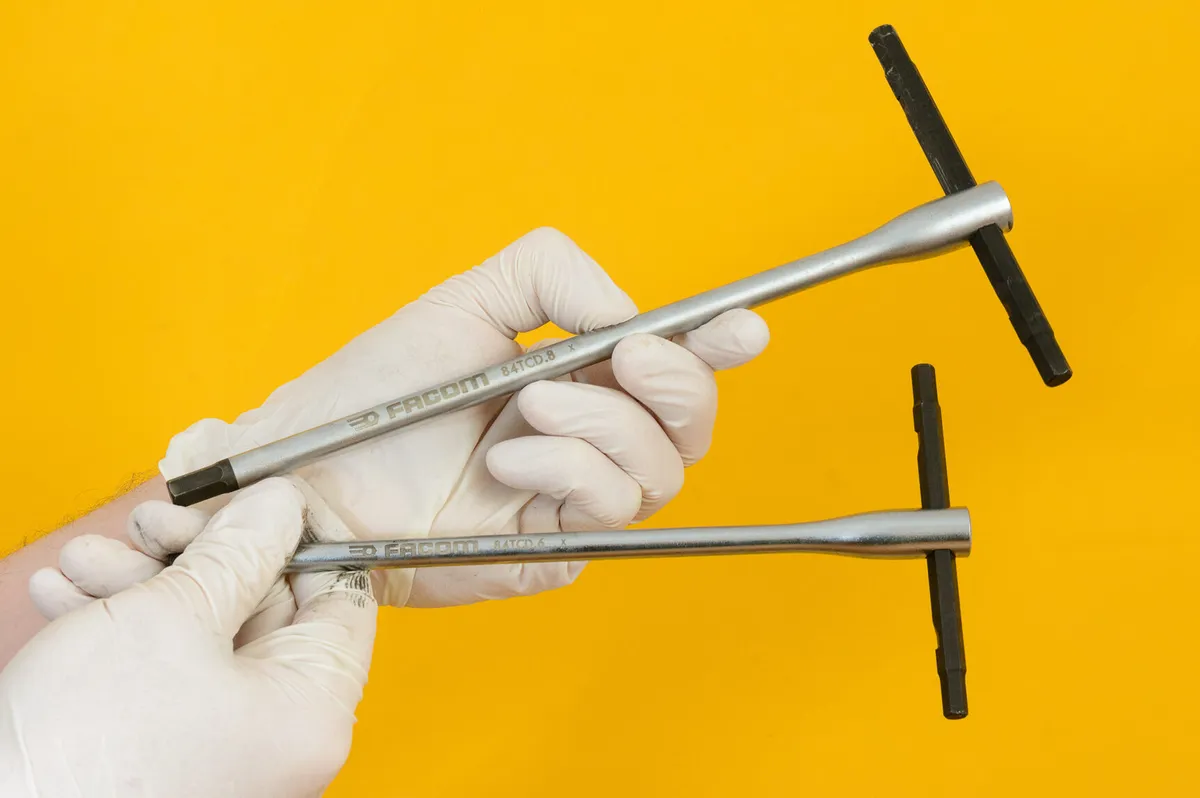
The guide below applies to modern threadless-style stems and headsets, and will help you to learn how to lower or raise bike handlebars. If your stem has bolts pinching it onto the steerer tube, it’s most likely threadless.
We also cover how to adjust the height of a quill-style stem below.
- Time : 15 minutes
- Skill rating : Easy
- Cost : Free
Tools you’ll need
- A multi-tool or a set of Allen keys
- A torque wrench or pre-set Torx key is recommended, especially if working with carbon or lighter parts
- Some stems, such as those from Zipp, Ritchey and Syncros, will use Torx keys rather than Allen bolts and so a T20, T25 or T30 Torx key will be required
- Possibly a hammer for some quill stems
How to add or remove headset spacers

The first and easiest way to adjust handlebar height is by moving headset spacers.
Headset spacers sit on the fork's steerer tube and help pre-load the headset bearings during adjustment.
Generally, most bikes have 20 to 30mm of headset spacers that can be moved freely above or below the stem. All bolts in the stem are standard-threaded (i.e. ‘lefty-loosey, righty-tighty’).
It’s easier to perform this task with the bike on the ground rather than on a repair stand . It makes adjusting the preload on the headset bearings as accurate as possible and stops the fork falling out of the frame.

First, equally loosen the clamp bolts on the back of the stem. You don’t need to undo them fully – just enough so the stem is free to move.
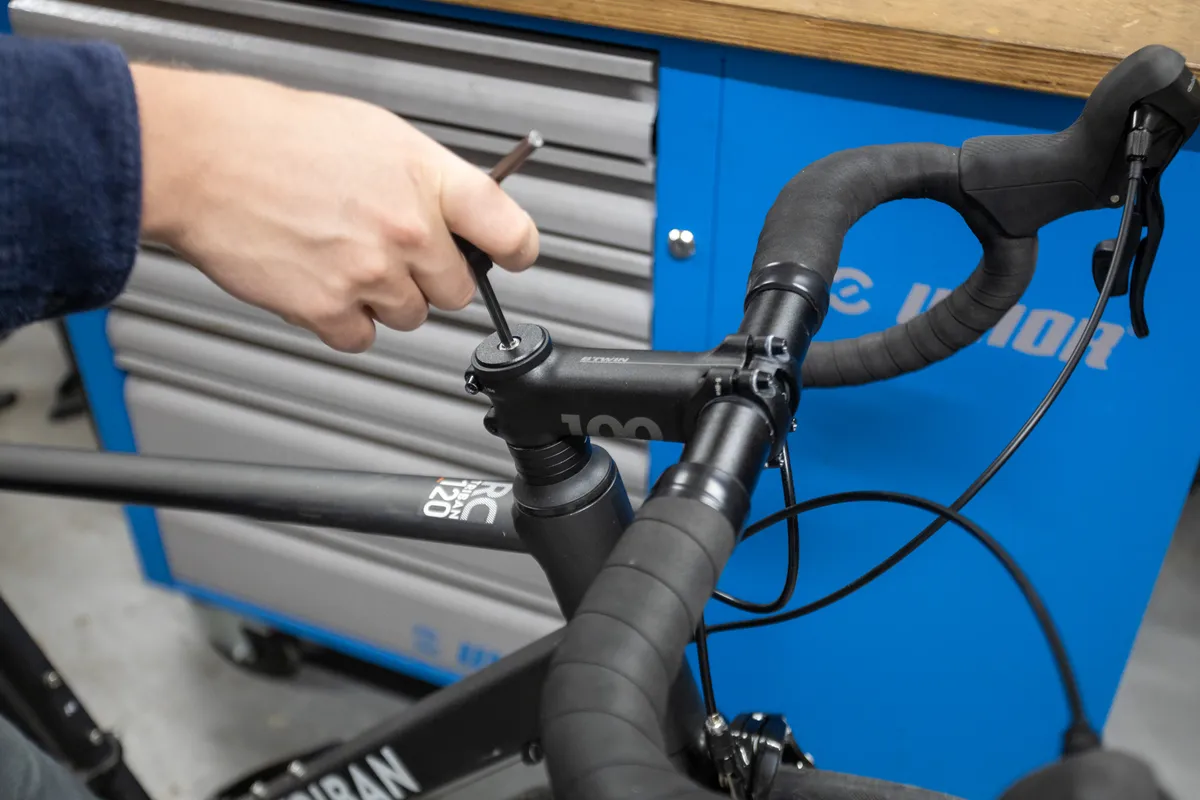
Remove the top cap that sits on top of the stem.
This is a good time to add a little fresh grease to the top-cap bolt, which can easily become seized in place.
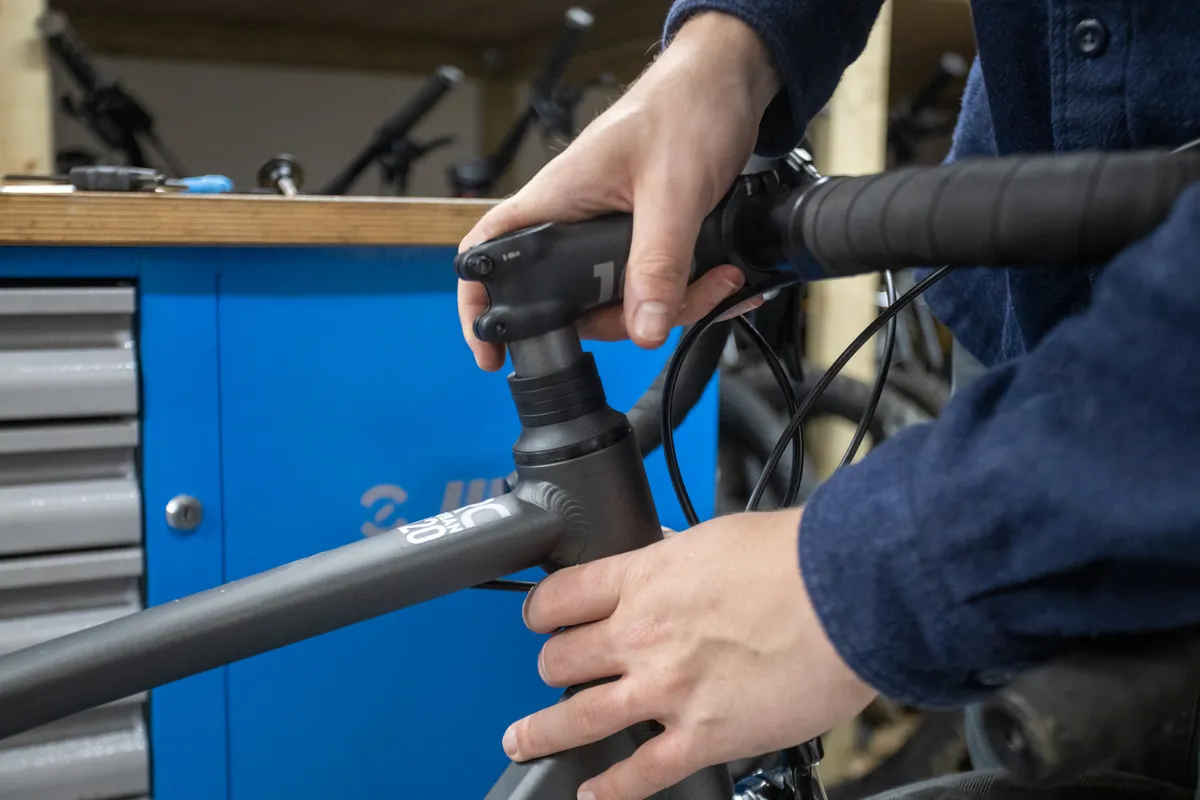
Slide the stem off the steerer tube.
This is what the top cap and bolt look like when undone. These pieces thread into a star nut on a metal steerer tube or an expander plug on a carbon steerer tube.

Decide how much you’d like to lower or raise your bar and add or remove the appropriately sized spacer(s).
Once you're happy with your position, it’s well worth cutting down the fork steerer tube to prevent any risk of injury from the tube in a crash.
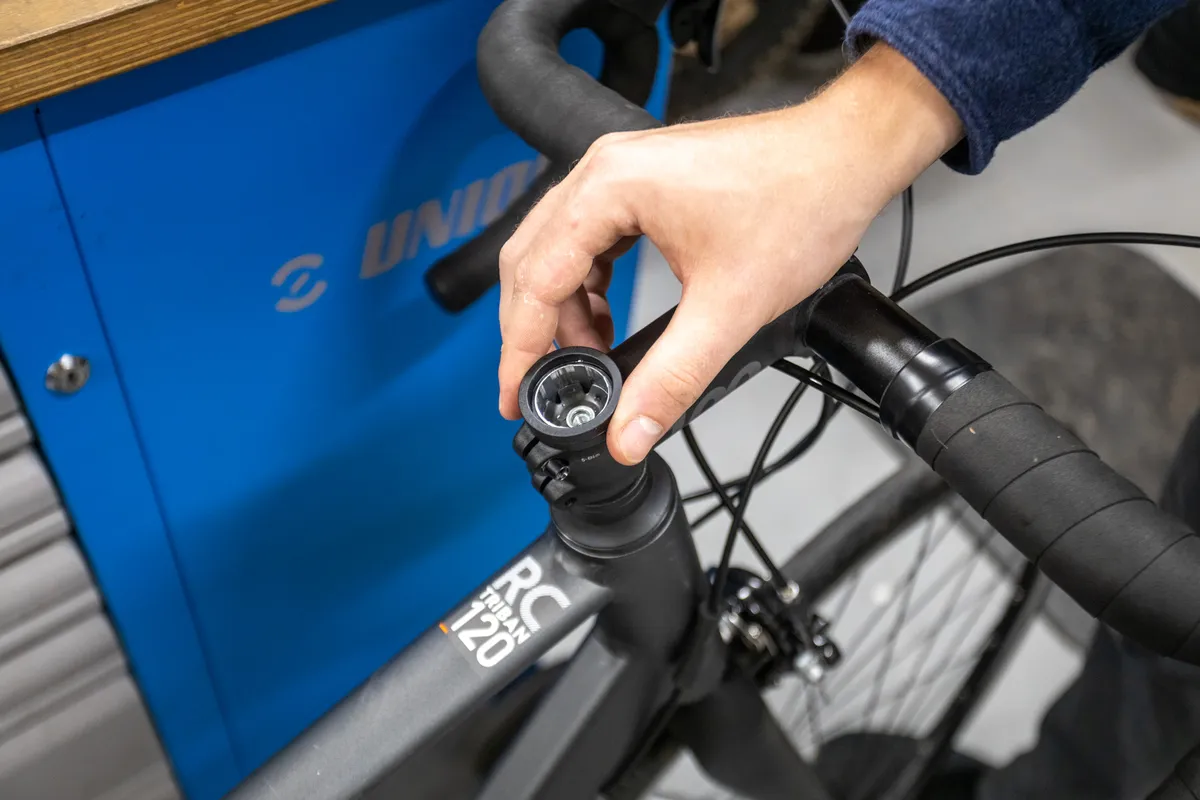
Slide the stem back onto the steerer tube and replace the spacers you just removed into position above the stem.
Ensure there is a 3 to 5mm gap between the steerer tube and the top of your stem/spacer. This will ensure there's enough space for the headset top cap to clamp down and pre-load the headset bearing.
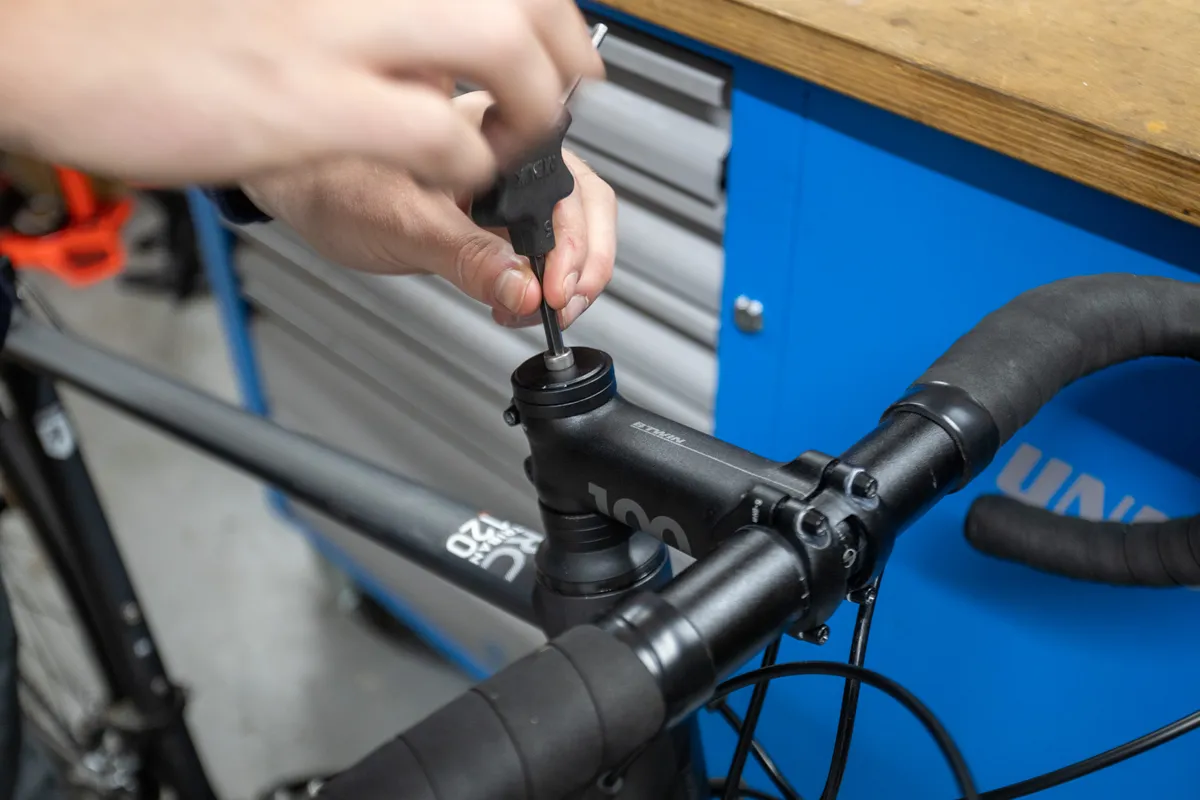
Now replace that top cap and bolt, and tighten until you feel some resistance. This top-cap bolt is used to pre-load the headset bearings.
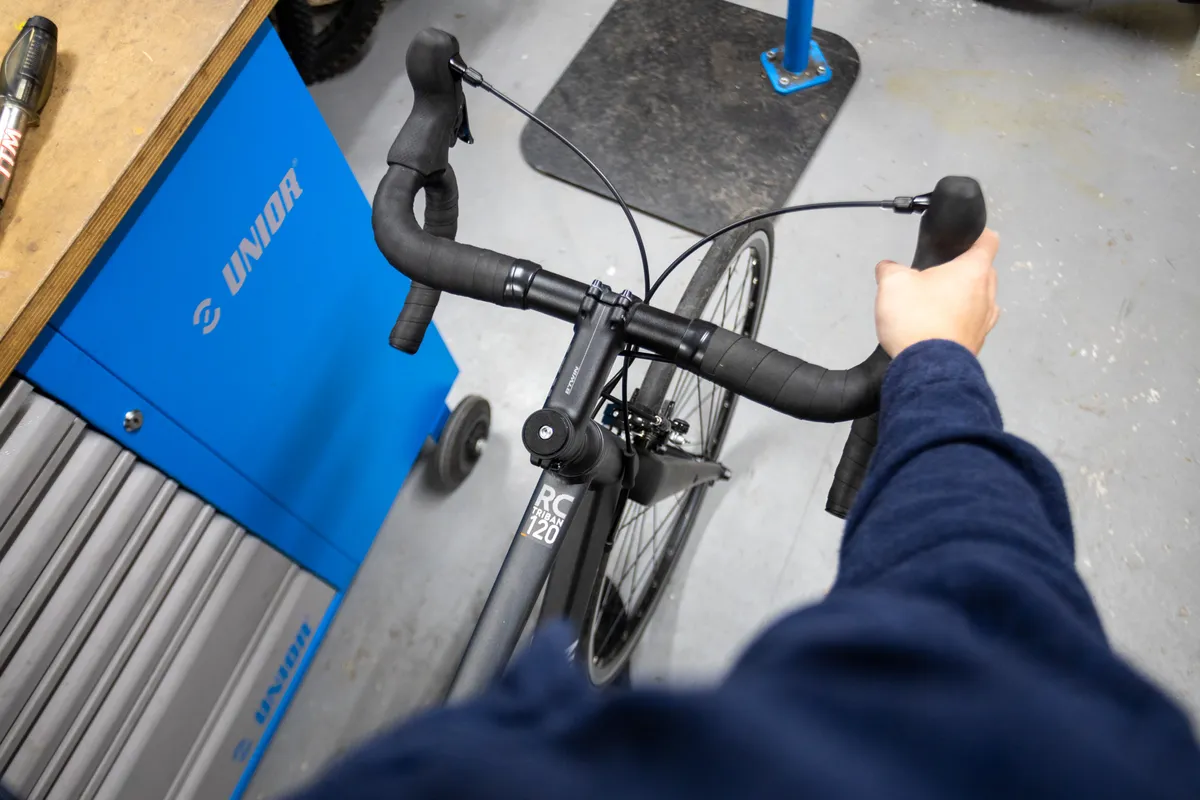
Next, align the stem with the front wheel, so the bar is at a right angle with the wheel. This may take some patience – it helps to straddle yourself over the top tube of the bike.
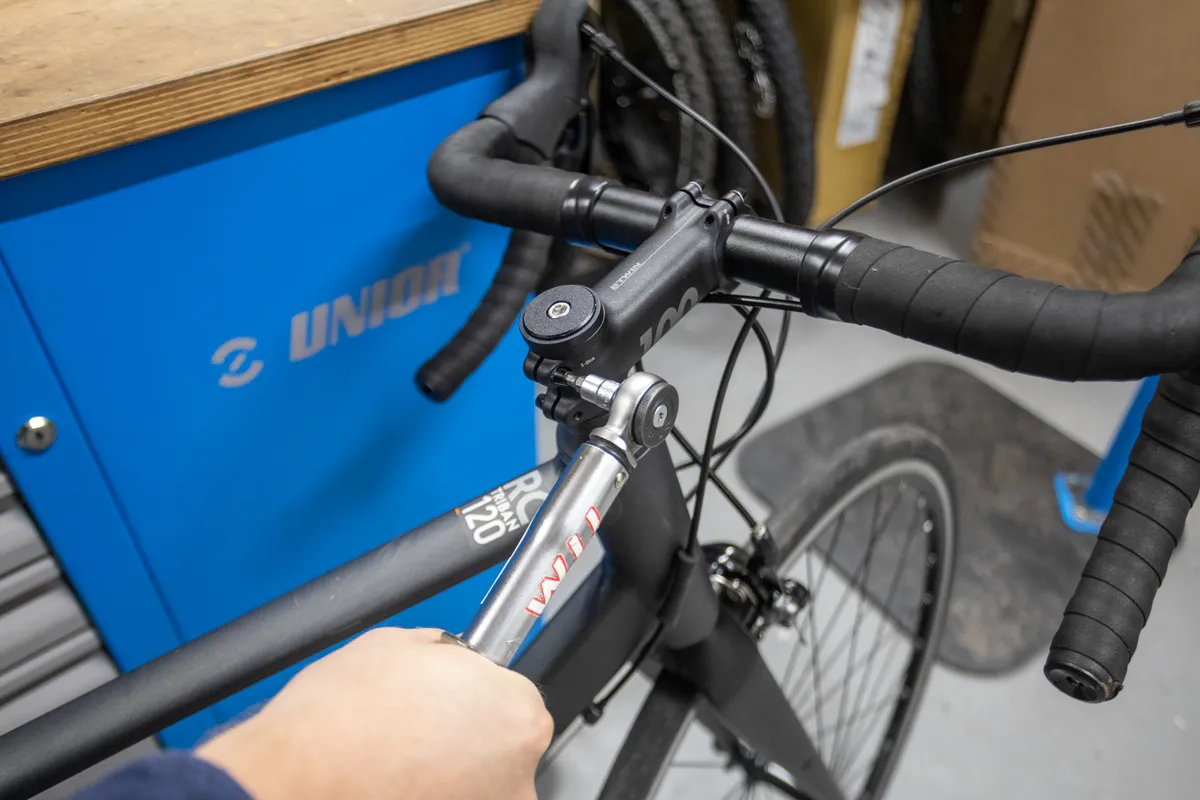
Once the wheel and stem are aligned, torque the stem-clamp bolts evenly to the manufacturer's recommended value using a torque wrench . This is often around 5 to 8Nm.
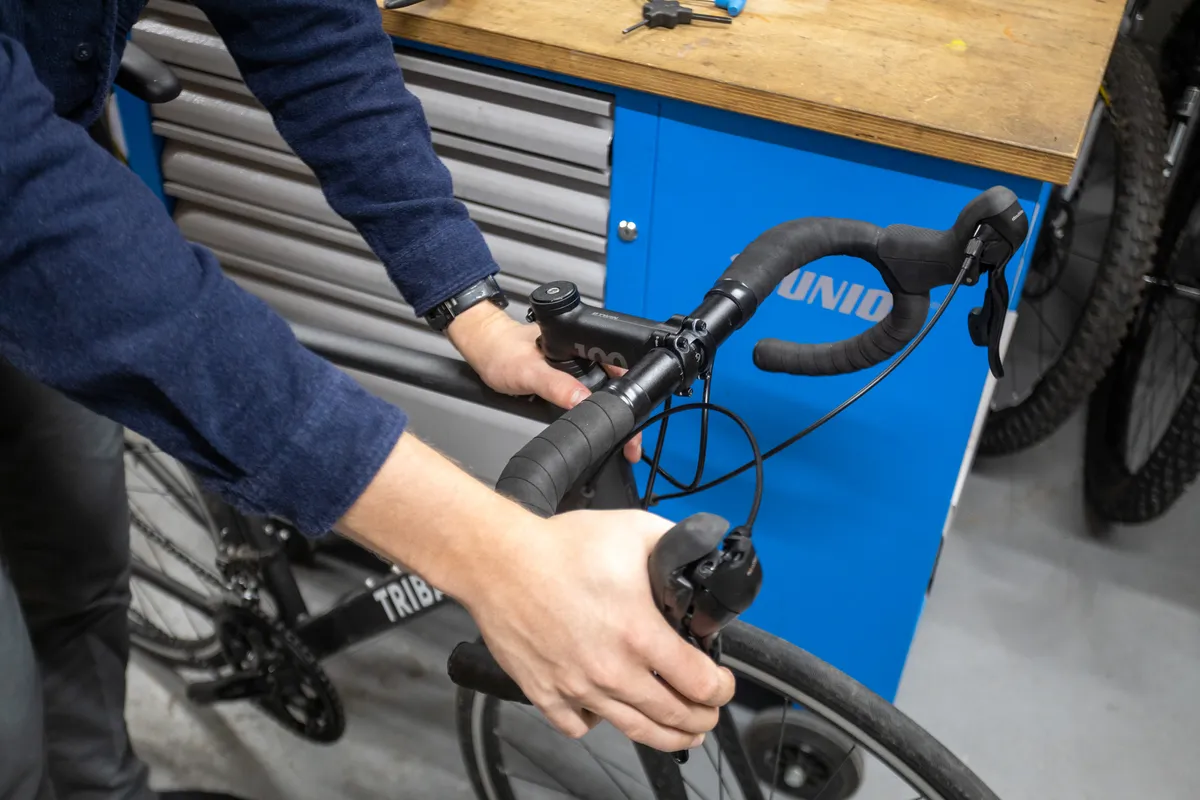
Check your headset adjustment.
An easy trick to get this right is to hold the front brake and put one hand on the headset, then rock the bars gently back and forth. Feel for the steerer rocking back and forth inside the head tube of the bike.
If you feel this, loosen the stem-clamp bolts and tighten the top-cap bolt another quarter-turn, then re-torque the stem-clamp bolts.
Repeat until all signs of bearing movement have disappeared and the handlebars still turn smoothly. If you've tightened the bolts too much, you'll feel a tight spot when turning the handlebars.
If your headset feels rough, it may be time to service or replace your headset bearings .
How to flip the stem on your bike

If spacers aren't enough to achieve the effect you want, you can flip the stem to make a further change to the bar height.
Most mountain bikes will be set up with the stem in a positive position, creating an upward angle, but you can use it the other way round.
This uses all the steps above with the addition of unbolting the handlebar from the front of the stem.

With the bike’s wheels firmly on the ground, make a mental note of the handlebar angle and the brake lever angle.
Matching up a piece of masking tape on the faceplate and bars will make sure you get the angle spot on when refitting.
Evenly undo the bolts that hold the handlebar to the front of the stem. Remove the stem's faceplate and store it somewhere safe.

Let the handlebar gently droop to the side and now follow the procedure for swapping spacers, outlined in steps 1 to 4 above.

While the stem is off the bike, flip it over and then slide it back onto the steerer tube.
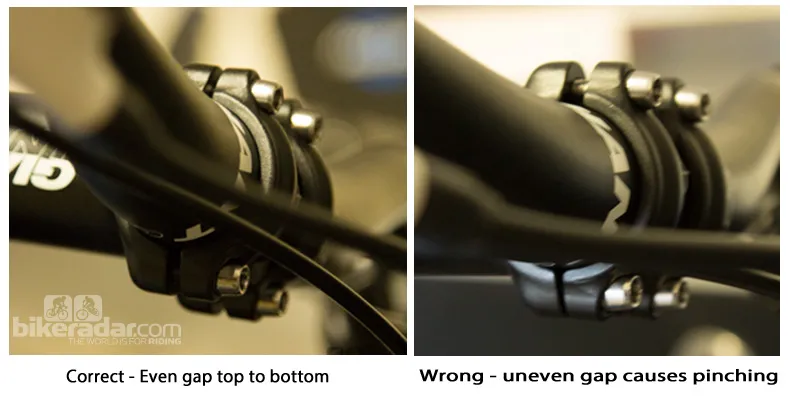
Reinstall the handlebar, replicating the previous brake lever and handlebar angle.
Tighten the faceplate to the manufacturer's recommended torque (generally between 4 and 8Nm). Ensure that all bolts are done up evenly, a little at a time, and that there is an even gap top to bottom with the faceplate once they're tight. If the gap isn’t even, the handlebar is being pinched.
While it's usually the case, it's not always suggested that stems should have an even gap at the top of the faceplate. Check your user manual if in any doubt.
Proceed with steps 3 to 7 above to pre-load the headset and tighten the stem.
How to raise handlebars on a bike

You can raise the handlebars on your bike using the steps outlined above by moving the stem so it's above as many headset spacers as possible or flipping the stem.
However, if the handlebar is still not high enough for you, there are other steps you can take.
You can replace your stem with one that has a greater degree of rise (the angle of the stem relative to the steerer tube). Bicycle stems come in different amounts of rise, typically between six and twenty degrees.
You can also install a stem riser. This is an attachment that fits to the fork steerer. Stem risers effectively lengthen your steerer tube allowing you to have stem and handlebar higher.
Stem risers can put greater strain on a fork steerer, particularly if it’s carbon.
What if my bike is integrated?
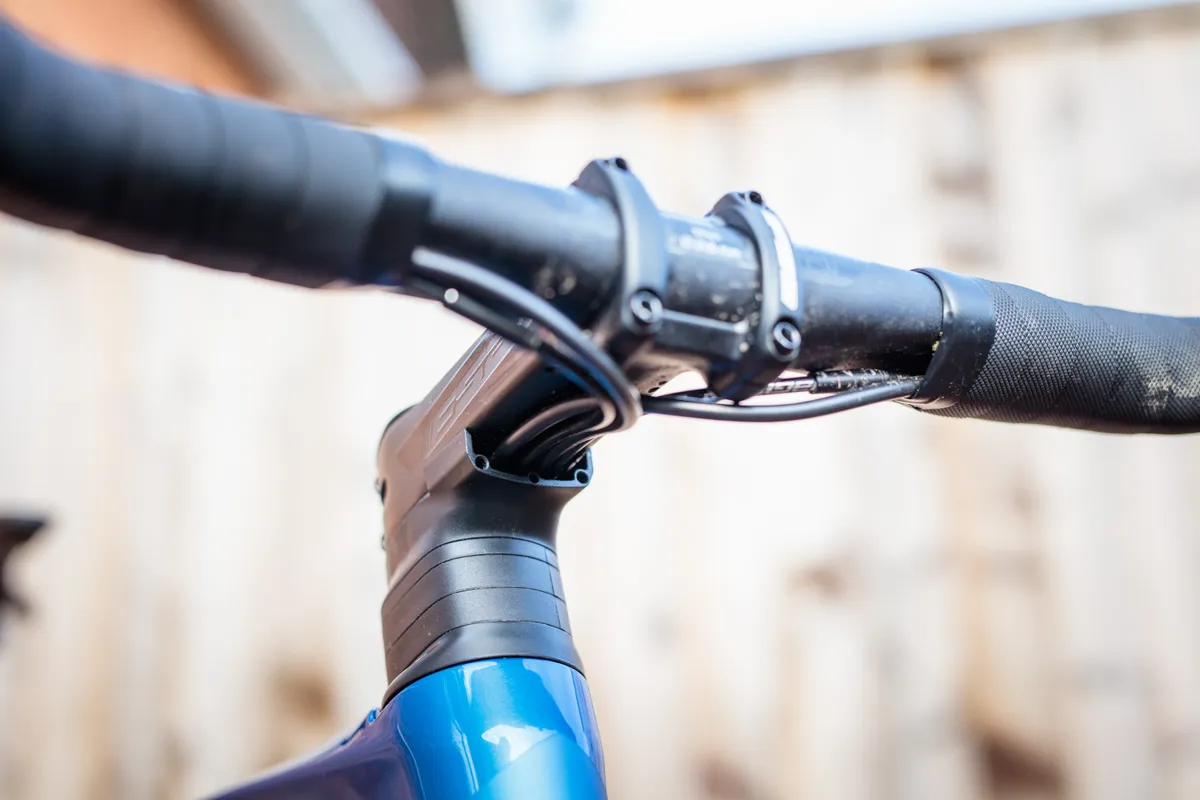
Many of the latest bikes across riding disciplines feature integrated front ends, with cables and hoses running through the handlebar and stem, and into the frame.
As a result, these bikes often make lowering or raising handlebar height more complicated.
Lowering your handlebar on these bikes generally isn’t too difficult. Many brands have introduced split headset spacers, which can be removed without having to remove the stem entirely.
Raising your handlebar can be trickier. You’ll want to make sure there is sufficient slack in the cables and hydraulic hoses. If they are too short, they will need to be replaced to introduce the required length.
How to adjust the height of a quill stem
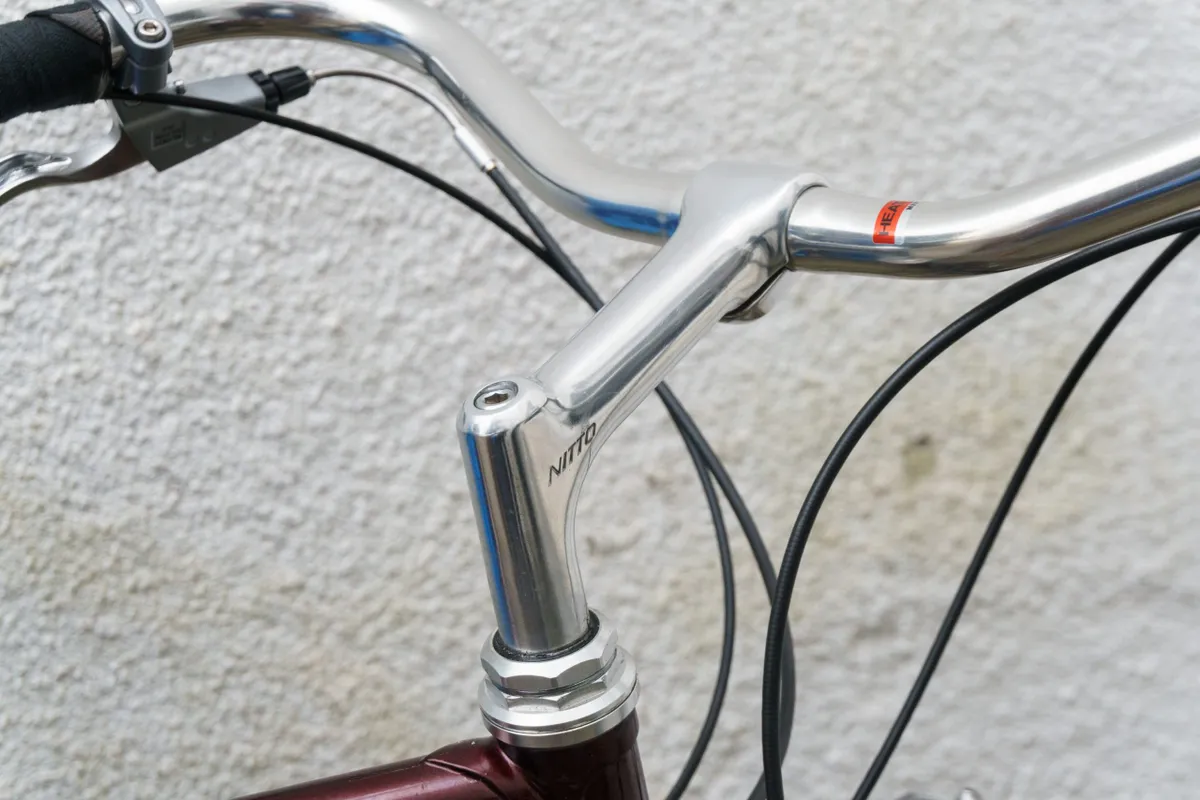
Quill stems were the norm before A-head/threadless style stems hit the market. They are still commonly seen on bikes of all styles and disciplines.
Quill stems slide into the steerer tube of the fork and are secured with either an expanding bung or sliding wedge that presses against the inside of the tube.
Adjusting their height is slightly different – but arguably much easier – than a threadless stem.
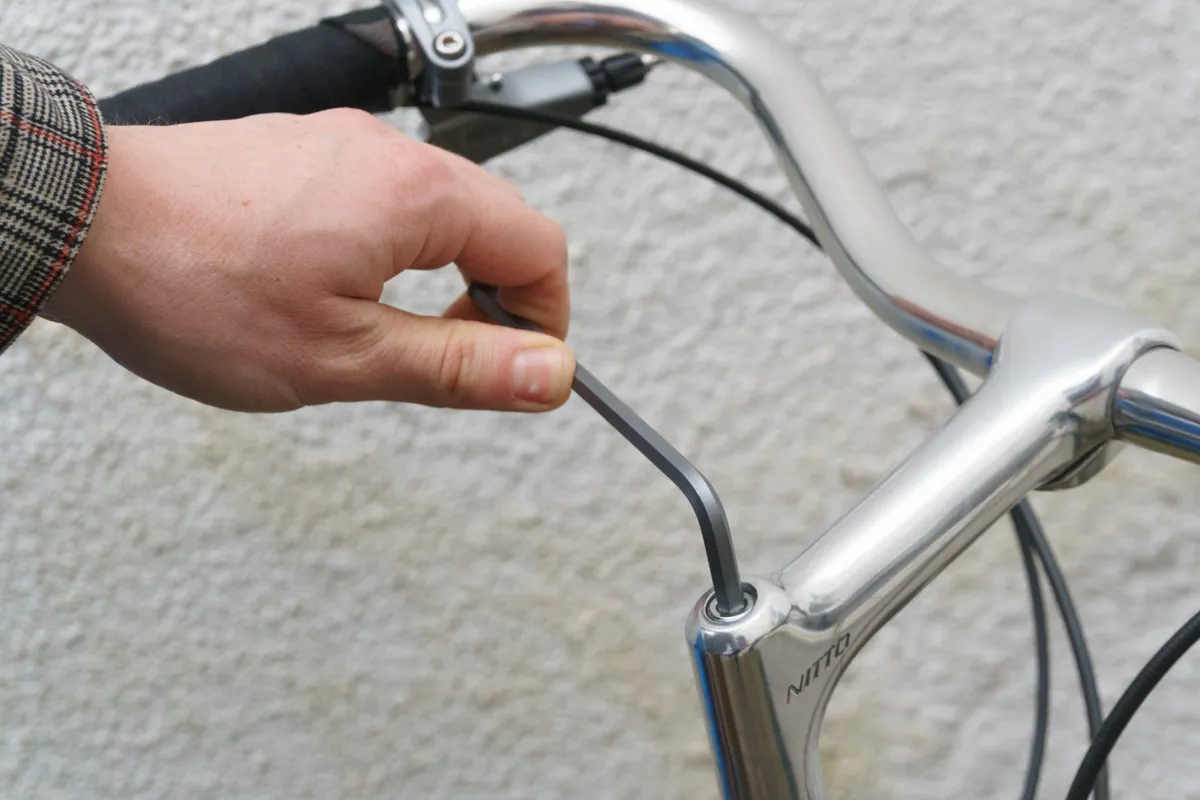
Begin by loosening the bolt on the top of the stem. Most use a hex head bolt, but some will use an external bolt.
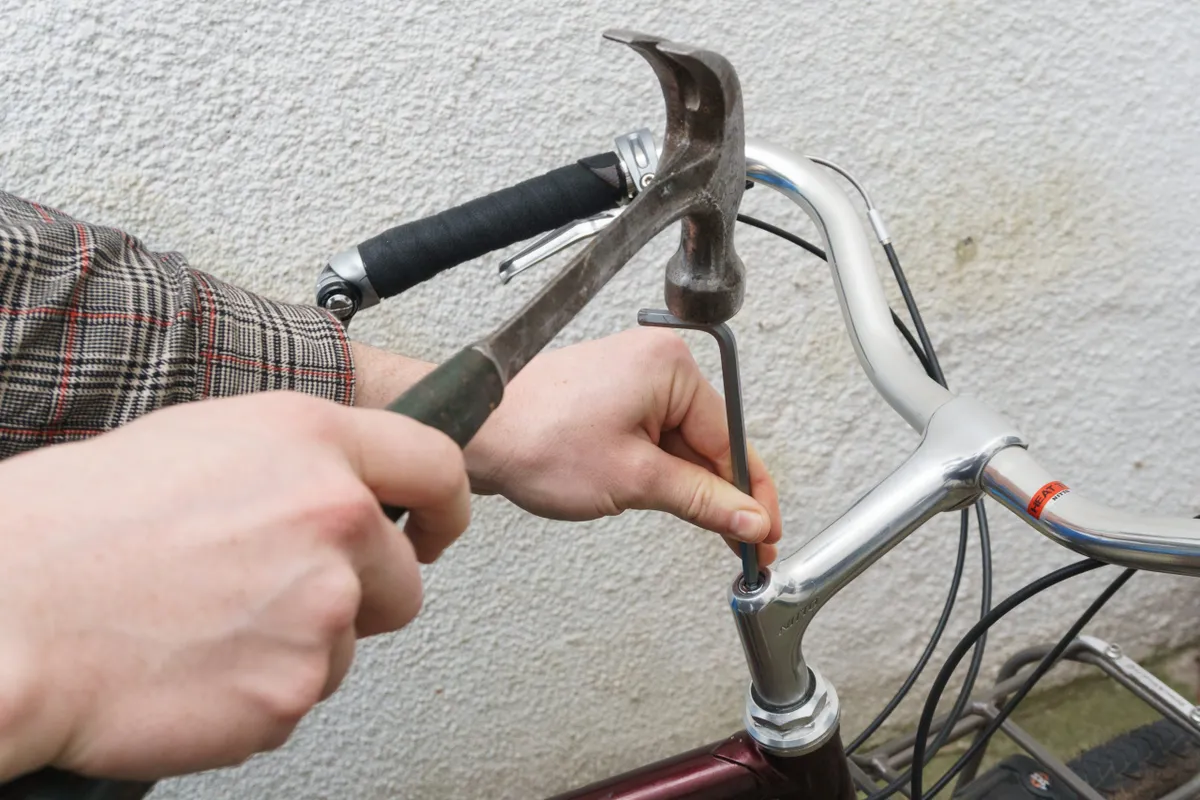
Once loosened, you may be able to move the stem freely.
If the stem hasn't been adjusted in some time, you may need to gently tap the bolt with a hammer to free the wedge or bung.
If the bolt is sitting proud of the stem, strike this directly. If it is flush with the top of the stem, you can use your hex key to gently tap the bolt.

The stem can now be adjusted to your heart's content. Be sure to check for any minimum and maximum insertion marks on the stem and adhere to these.
It is good practice to periodically grease the shaft of a quill stem because they frequently seize if left dry.
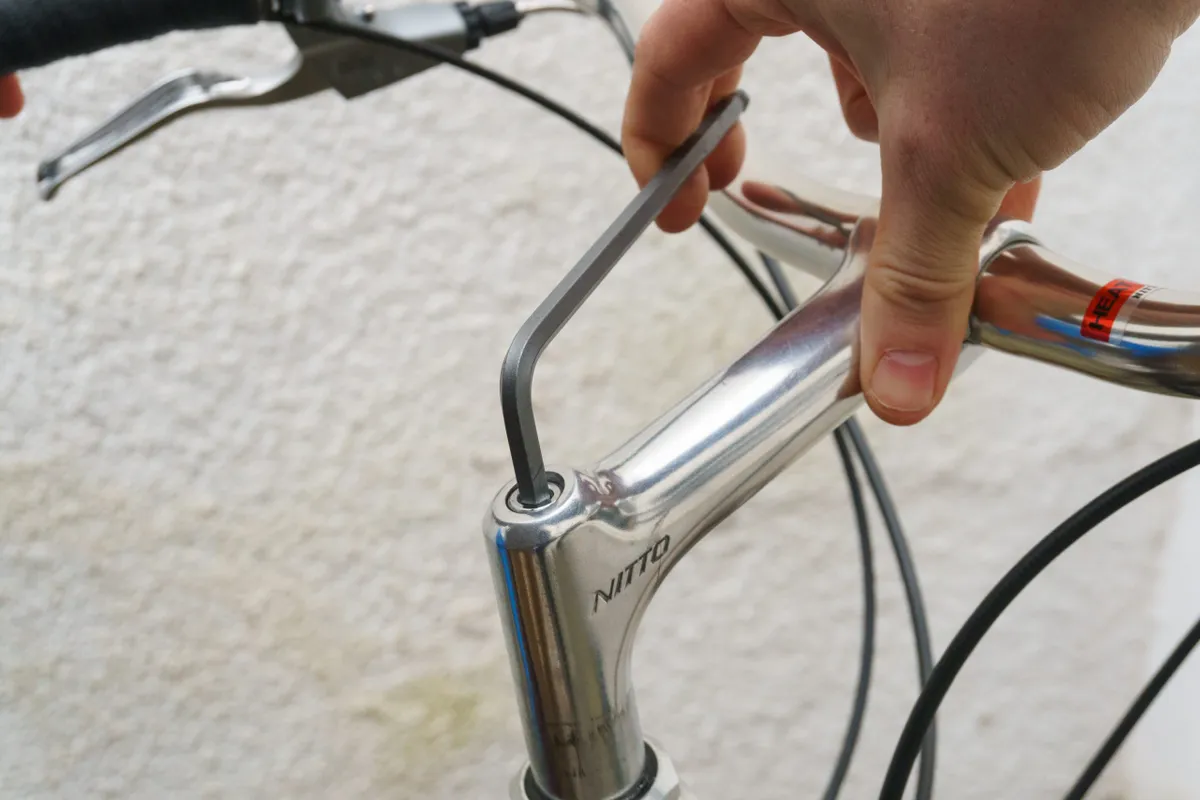
Once you have set the height of your stem and lined it up with your front wheel, you can re-tighten the wedge bolt to spec.
You’re now good to hit the trail and/or road to test out the bike's new handling characteristics.
It may take some trial and error along with patience to find that perfect height, but once you've got it, you'll be far closer to realising the bike's true potential.
Share this article

Deputy editor

- Terms & Conditions
- Subscribe to our magazines
- Manage preferences

How To Raise The Handlebars On A Trek Bike
If you’re looking to raise the handlebars on your Trek bike, there are a few things you’ll need to do. First, you’ll need to loosen the stem bolts that secure the handlebars to the frame. Next, you’ll need to raise the handlebars to the desired height and tighten the stem bolts. Finally, you’ll need to check the handlebar height to make sure it’s comfortable for you. Follow these steps and you’ll have your Trek bike set up in no time!
- Unscrew the cap at the top of the stem
- Insert a hex key into the bolt and loosen it
- Raise the handlebars to the desired height and retighten the bolt
- Screw the cap back on
Trek bike handlebar/stem extender
- 1 Trek bike handlebar/stem extender
- 2 How do you adjust the handlebar height on a Trek bike?
- 3 How do I raise the handlebars on my bike?
- 4 How do you raise the trek Marlin handlebars?
- 5 How do you raise the handlebars on a trek verve 2?
- 6 How to change your handlebar height
- 7 Conclusion
If you ride a bike, you know how important it is to have a comfortable grip on the handlebars. But what do you do when your bike’s handlebars are too close together? That’s where a Trek bike handlebar/stem extender comes in handy. A Trek bike handlebar/stem extender is a simple device that attaches to your bike’s handlebars and extends them outwards, giving you a wider grip. This can be extremely helpful if you have large hands or if you’re riding a bike with narrow handlebars. Installing a Trek bike handlebar/stem extender is a quick and easy process. Simply remove the screws that hold on your bike’s existing handlebar grips and then screw on the extender. It’s that simple! Once installed, you’ll immediately notice a difference in the way your bike feels. You’ll have more control and a more comfortable grip on the handlebars. And, you won’t have to worry about your hands slipping off the handlebars while you’re riding. If you’re looking for a way to improve your bike riding experience, consider installing a Trek bike handlebar/stem extender. You won’t be disappointed!
How do you adjust the handlebar height on a Trek bike?
Assuming you would like a blog post discussing how to adjust the handlebar height on a Trek bike: Many people think that you can only adjust the handlebar height on a Trek bike by taking it to a bike shop. However, this is not the case! You can actually adjust the handlebar height on a Trek bike yourself, and it’s pretty easy to do. The first thing you need to do is loosen the handlebar clamp bolts. To do this, simply unscrew the bolts with an Allen wrench. Once the bolts are loosened, you can slide the handlebars up or down to the desired height. Once you have the handlebars at the desired height, tighten the clamp bolts back up. That’s it! You’ve now successfully adjusted the handlebar height on your Trek bike. Keep in mind that you may need to readjust your stem if you adjust the handlebar height by more than a few centimeters. Also, if you have a carbon handlebar, be careful not to overtighten the clamp bolts, as this could damage the handlebar.
How do I raise the handlebars on my bike?
Assuming you would like tips on how to raise the handlebars on your bike: If you’re finding that your handlebars are too low and you’re struggling to ride comfortably, you may need to raise them. This is a relatively simple process that can be completed in just a few minutes with the right tools. First, you’ll need to gather a few supplies. You’ll need an adjustable wrench, an Allen key set, and a Phillips head screwdriver. Once you have your tools, you can begin the process of raising your handlebars. Start by loosening the bolts that secure your handlebars to the stem. These bolts are typically located at the top of the stem, and you’ll need to use your adjustable wrench to loosen them. Once the bolts are loose, you can begin to raise the handlebars. Raise the handlebars slowly and evenly until they’re at the height you’re comfortable with. Once they’re in the desired position, you can use your Allen key set to tighten the bolts back into place. Make sure the bolts are tight enough that the handlebars won’t move, but don’t overtighten them as this can damage the bolts. And that’s it! You’ve now successfully raised your handlebars and can enjoy a more comfortable ride.
How do you raise the trek Marlin handlebars?
If you’re looking to raise the handlebars on your Marin bike, there are a few things you’ll need to do. First, you’ll need to loosen the stem bolts that hold the handlebars in place. Next, you’ll need to remove the handlebars from the stem. Once the handlebars are removed, you can add spacers to the stem to raise the handlebars to your desired height. Finally, you’ll need to re-attach the handlebars and tighten the stem bolts. Follow these steps and you’ll have your Marin bike set up with higher handlebars in no time!
How do you raise the handlebars on a trek verve 2?
If you’re looking to raise the handlebars on your Trek Verve 2, there are a few things you’ll need to do. First, you’ll need to loosen the stem bolt using an Allen wrench. Next, you’ll need to unscrew the top cap and remove the star nut. Once these two things are removed, you can raise the handlebars to your desired height and tighten the stem bolt back down. Finally, put the top cap and star nut back on and you’re all set!
How to change your handlebar height
To raise the handlebars on a Trek bike, first loosen the bolt at the base of the stem using an Allen wrench. Next, raise the handlebars to the desired height and tighten the bolt. You may need to readjust the brake cables and shifters after raising the handlebars.
- Stores Stores
- Account Account
- Subtotal : $ 0.00 Checkout Cart
- 16-Inch (3-6 yr. old)
- Precaliber 16
Trek Precaliber 16
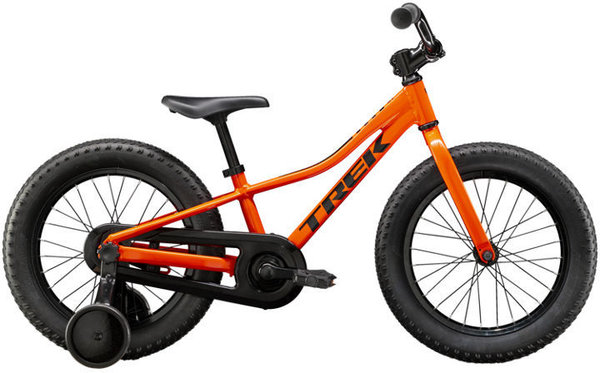
Teaching and learning to ride is a breeze with Precaliber 16. It has a handle built into the saddle so you can guide while they ride, and tool-free training wheels that are super easy to install and remove. It's a great fit for kids ages 4-5 between 39-46-inches tall. It's right for you if... It's finally time to teach your little one to ride! You want to make it a great memory, so you're looking for a bike that's comfortable, durable, and fun. Simplicity is key, and you want to be able to pop off the training wheels easily when the time is right. The tech you get This kid-friendly bike has a handle integrated right into the saddle so you can help guide your child while they ride, plus a coaster brake and tool-less training wheels that can be installed and removed at the turn of a dial. Plus, the lightweight aluminum frame is easy to maneuver. The final word You want to make sure your child's first bike is comfortable, durable, and fun. Each of our bikes, all the way down to the smallest size, is built to our highest standards, so you can feel confident when you choose Trek for your family. Why you'll love it - This bike is a memory-maker: seeing your child ride their bike for the first time is something you'll never forget - This bike is hand-me-down heaven: it's built to last, so younger siblings can inherit this bike and it'll still feel like new - You shouldn't buy your kid's bike where you buy your cereal—Unlike big box brands, Trek kids' bikes are assembled by people who know bikes - You can replace the saddle's integrated handle with an integrated light mount when your child starts adventuring on their own - Like all Precaliber bikes, the frame is lower so it's easier for kids to stand over and hop on and off

* Subject to change without notice.
Trek Precaliber
Part numbers.

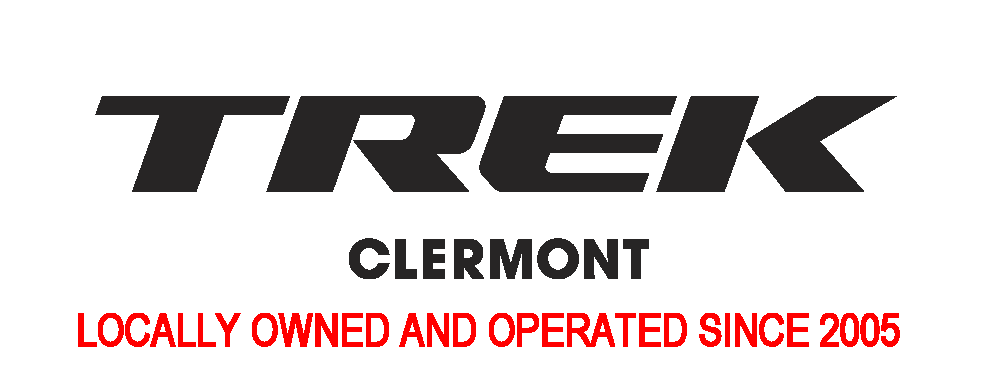
- Find Us Store
- My Account My Account
- Subtotal : $ 0.00 Checkout Cart
- Bicycling Catalog
- 16-Inch (3-6 yr. old)
- Precaliber 16
Trek Precaliber 16
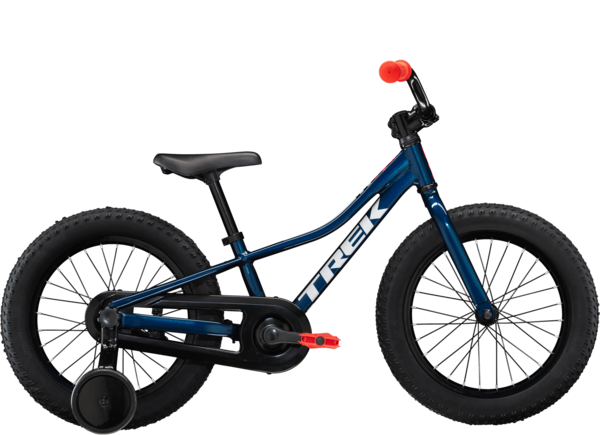
Teaching and learning to ride is a breeze with Precaliber 16 Coaster Brake. It has a handle built into the saddle so you can guide while they ride, and tool-free training wheels that are super easy to install and remove. It's a great fit for kids ages 4-5 between 39-46? tall. It's right for you if... It's finally time to teach your little one to ride! You want to make it a great memory, so you're looking for a bike that's comfortable, durable, and fun. Simplicity is key, and you want to be able to pop off the training wheels easily when the time is right. The tech you get This kid-friendly bike has a handle integrated right into the saddle so you can help guide your child while they ride, plus a coaster brake and tool-less training wheels that can be installed and removed at the turn of a dial. Plus, the lightweight aluminum frame is easy to maneuver. The final word You want to make sure your child's first bike is comfortable, durable, and fun. Each of our bikes, all the way down to the smallest size, is built to our highest standards, so you can feel confident when you choose Trek for your family. Why you'll love it - This bike is a memory-maker: seeing your child ride their bike for the first time is something you'll never forget - This bike is hand-me-down heaven: it's built to last, so younger siblings can inherit this bike and it'll still feel like new - Investing in a kids' bike from an established bike brand is worth it-Trek kids' bikes are designed and assembled by people who know bikes - You can replace the saddle's integrated handle with an integrated light mount when your child starts adventuring on their own - Like all Precaliber bikes, the frame is lower so it's easier for kids to stand over and hop on and off Features: Integrated handle Hidden handle under the saddle helps you guide your child while they learn to ride. Toolless training wheels When your little one is ready to ditch the training wheels, the only tools you'll need are your hands.
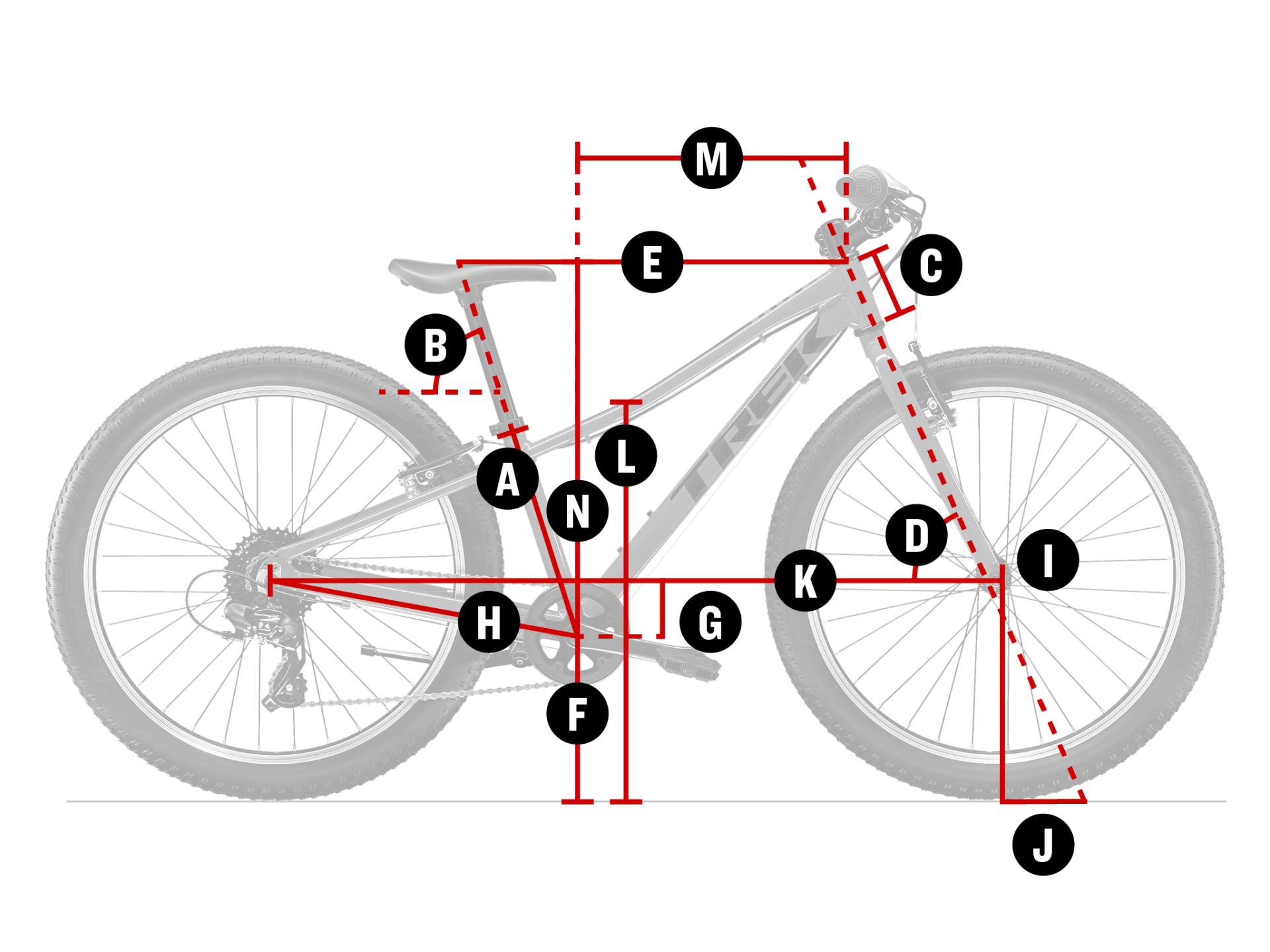
* Subject to change without notice.
Part Numbers

- Find Us Store
- My Account My Account
- Subtotal : $ 0.00 Checkout Cart
- 16-Inch (3-6 yr. old)
- Precaliber 16
Trek Precaliber 16
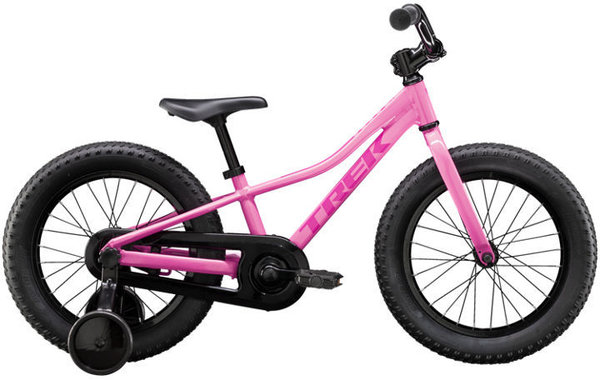
Teaching and learning to ride is a breeze with Precaliber 16. It has a handle built into the saddle so you can guide while they ride, and tool-free training wheels that are super easy to install and remove. It's a great fit for kids ages 4-5 between 39-46-inches tall. It's right for you if... It's finally time to teach your little one to ride! You want to make it a great memory, so you're looking for a bike that's comfortable, durable, and fun. Simplicity is key, and you want to be able to pop off the training wheels easily when the time is right. The tech you get This kid-friendly bike has a handle integrated right into the saddle so you can help guide your child while they ride, plus a coaster brake and tool-less training wheels that can be installed and removed at the turn of a dial. Plus, the lightweight aluminum frame is easy to maneuver. The final word You want to make sure your child's first bike is comfortable, durable, and fun. Each of our bikes, all the way down to the smallest size, is built to our highest standards, so you can feel confident when you choose Trek for your family. Why you'll love it - This bike is a memory-maker: seeing your child ride their bike for the first time is something you'll never forget - This bike is hand-me-down heaven: it's built to last, so younger siblings can inherit this bike and it'll still feel like new - You shouldn't buy your kid's bike where you buy your cereal—Unlike big box brands, Trek kids' bikes are assembled by people who know bikes - You can replace the saddle's integrated handle with an integrated light mount when your child starts adventuring on their own - Like all Precaliber bikes, the frame is lower so it's easier for kids to stand over and hop on and off

* Subject to change without notice.
Trek Precaliber
Keep up with everything Wheel! Sign Up

- Account Account
- Store Store
- Subtotal : $ 0.00 Checkout Cart
- Kids' Bikes
- 16-Inch (3-6 yr. old)
- Precaliber 16
Trek Precaliber 16

Teaching and learning to ride is a breeze with Precaliber 16. It has a handle built into the saddle so you can guide while they ride, and tool-free training wheels that are super easy to install and remove. It's a great fit for kids ages 4-5 between 39-46-inches tall. It's right for you if... It's finally time to teach your little one to ride! You want to make it a great memory, so you're looking for a bike that's comfortable, durable, and fun. Simplicity is key, and you want to be able to pop off the training wheels easily when the time is right. The tech you get This kid-friendly bike has a handle integrated right into the saddle so you can help guide your child while they ride, plus a coaster brake and tool-less training wheels that can be installed and removed at the turn of a dial. Plus, the lightweight aluminum frame is easy to maneuver. The final word You want to make sure your child's first bike is comfortable, durable, and fun. Each of our bikes, all the way down to the smallest size, is built to our highest standards, so you can feel confident when you choose Trek for your family. Why you'll love it - This bike is a memory-maker: seeing your child ride their bike for the first time is something you'll never forget - This bike is hand-me-down heaven: it's built to last, so younger siblings can inherit this bike and it'll still feel like new - You shouldn't buy your kid's bike where you buy your cereal—Unlike big box brands, Trek kids' bikes are assembled by people who know bikes - You can replace the saddle's integrated handle with an integrated light mount when your child starts adventuring on their own - Like all Precaliber bikes, the frame is lower so it's easier for kids to stand over and hop on and off

* Subject to change without notice.
Trek Precaliber

- Stores Stores
- Account Account
- Subtotal : $ 0.00 Checkout Cart
- Bicycling Catalog
- 16-Inch (3-6 yr. old)
- Precaliber 16
Trek Precaliber 16

Teaching and learning to ride is a breeze with Precaliber 16. It has a handle built into the saddle so you can guide while they ride, and tool-free training wheels that are super easy to install and remove. It's a great fit for kids ages 4-5 between 39-46-inches tall. It's right for you if... It's finally time to teach your little one to ride! You want to make it a great memory, so you're looking for a bike that's comfortable, durable, and fun. Simplicity is key, and you want to be able to pop off the training wheels easily when the time is right. The tech you get This kid-friendly bike has a handle integrated right into the saddle so you can help guide your child while they ride, plus a coaster brake and tool-less training wheels that can be installed and removed at the turn of a dial. Plus, the lightweight aluminum frame is easy to maneuver. The final word You want to make sure your child's first bike is comfortable, durable, and fun. Each of our bikes, all the way down to the smallest size, is built to our highest standards, so you can feel confident when you choose Trek for your family. Why you'll love it - This bike is a memory-maker: seeing your child ride their bike for the first time is something you'll never forget - This bike is hand-me-down heaven: it's built to last, so younger siblings can inherit this bike and it'll still feel like new - You shouldn't buy your kid's bike where you buy your cereal—Unlike big box brands, Trek kids' bikes are assembled by people who know bikes - You can replace the saddle's integrated handle with an integrated light mount when your child starts adventuring on their own - Like all Precaliber bikes, the frame is lower so it's easier for kids to stand over and hop on and off

* Subject to change without notice.
Trek Precaliber

30-Day Unconditional Guarantee
Ride it and love it, or we'll take it back
- filter controls Items 24 24 48 72 filter controls Sort by Featured Featured A-Z Z-A Price Low-High Price High-Low
Shop in-store for even more deals!
Shop in store for even more deals we can't advertise!
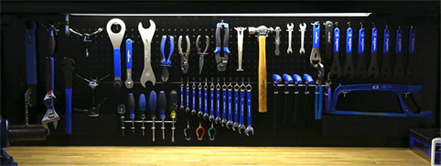
Mountain Bike Suspension Service
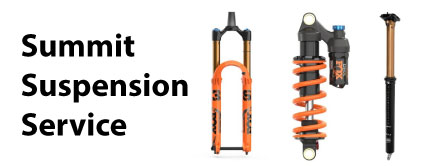
Trade In Your Bike

- Base Layers
- Mountain Bike Shorts
- Bibs, Tights + Knickers
- Mountain Bike Shoes
SAFETY GEAR
- Adult Helmets
- Youth Helmets
- Road Helmets
- Casual Wear
- Road Bike Shorts
- Bibs, Tights & Knickers
- Road Bike Shoes
- Accessories/Parts
Safety Gear
- Women's Helmets
- Road Bike Helmets
- Mountain Bike Helmets
WHEELS & TIRES
- Road Wheels
- Mountain Bike Wheels
- Mountain Bike Tires
- Wheels Accessories and Parts
- Derailleurs
- Chains & Cassettes
- Cranks and Chainrings
- Bottom Brackets
- Cables and Housing
- Power Meters
BRAKES & PEDALS
- Clipless Pedals
- Flat Pedals
- Mountain Bike Brake Sets
- Mountain Bike Brake Pads
- Road Bike Brakes and Pads
- All Brakes/Levers/Pads
Forks & Cockpit
- Grips and Bar Tape
- Rigid Forks
- Suspension Forks
Accessories
- Car Rack Accessories
- Electronics
- Front Lights
- Tail Lights
- Locks/Security
- Media/Resources
- Bicycle Mounted Racks
- Pumps/Inflation
- Tools/Maintenance
- Trailers/Strollers
- Trainers/Rollers
- Travel/Storage
- Water Bottles & Cages
Brand Guides
Bike buyer's guides, gear guides, new bike releases, summit bicycles online (855) 245-3663 [email protected] email, burlingame (650) 343-8483 [email protected] email, summit outfitters (408) 878-3252 [email protected] email, los gatos (408) 399-9142 [email protected] email, san jose (408) 264-2453 [email protected] email, palo alto (650) 304-0035 [email protected] email, summit bicycles mobile we'll come to you schedule mobile service today, (855) bike-one - for online orders and rental inquiries.
- Account Account
- Subtotal : $ 0.00 Checkout Cart
- Bicycling Catalog
- Children's Bikes
- 20-Inch (5-8 yr. old)
- Precaliber 20
Trek Precaliber 20
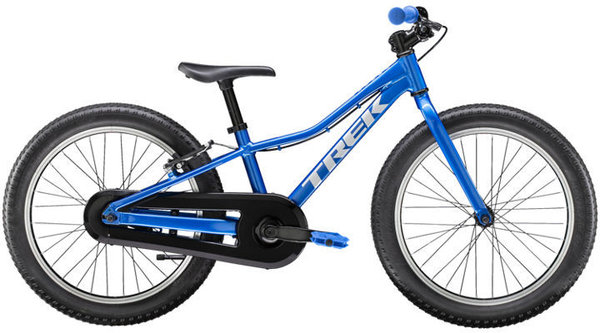
Precaliber 20 will have your little rider begging to go out for a pedal on their first real big kid bike. It's a great transition model from training wheels. It has one speed, a coaster brake, and a saddle with an integrated handle that can be swapped out for a light mount. For kids ages 6-8, between 45-52-inches tall. It's right for you if... Your kid is ready to leave training wheels behind, and you want to get them a fun, durable, bike that's simple to use. You don't want to settle for a big box brand, because you know the value of a high-quality bike that will keep your kid confident and in control. The tech you get A lightweight Alpha Silver Aluminum frame, one speed, and a coaster brake. Plus, a kickstand and a saddle with an integrated handle that can be swapped out for an integrated taillight mount. Everything on this bike is built to last, so it'll still feel like new when handed down to younger siblings. The final word This bike is the perfect choice for young riders who want to transition from a little kid bike to a big kid bike, with a simple, quality frame that will keep them upright and smiling while they ride at the park with friends or on the local bike paths with your family. Why you'll love it - One speed is all you need—a simple set-up gives kids confidence and helps them stay in control - Coaster brakes are simple and intuitive for kids to use—they just pedal backwards to stop! - You can replace the saddle's integrated handle with an integrated light mount to boost visibility on family adventures and solo excursions - Like all Precaliber bikes, the frame is lower so it's easier for kids to stand over and hop on and off - You shouldn't buy your kid's bike where you buy your cereal—Unlike big box brands, Trek kids' bikes are assembled by people who know bikes

* Subject to change without notice.
Part Numbers


IMAGES
VIDEO
COMMENTS
Step 1. The best way to raise your bike's handlebar is to add spacers. The first thing to do is to place your bike on your workstation stand. Make sure that the wheels are firm on the ground. Then slowly loosen the clamp bolts on your stem's rear area. Add a bit of grease on the top cap's bolt.
Step 1: Assessing Your Handlebar Height. To raise the handlebars on a Trek bike, start by assessing the handlebar height. This can be done by adjusting the stem or using a stem riser. Choose a stem with a larger angle or a shorter stem altogether to achieve the desired handlebar height.
Step 3: Raising Handlebars On Quill Stems. If your Trek bike has a quill stem, follow these steps: Loosen the bolt: Locate the bolt at the top of the stem. Use an appropriately sized Allen wrench or adjustable wrench to loosen the bolt. Turn it counterclockwise until it is loose enough to allow the stem to move.
2. Loosen the stem expander bolt two to three turns. 3. Tap the top of the stem expander bolt with a wood, rubber, or plastic faced mallet to loosen the stem wedge. 4. Adjust the handlebar to the desired height, making sure the minimum insertion line is inside the frame. 5. Align the stem with the top tube.
Adjusting the handlebar height on your bike is not difficult once you know how. This detailed guide walks you through the process of adjusting threadless and quill stems.
You will need to loosen both the stem cap as well as the bolts that clamp the stem to the steerer tube. You will then need to remove the cap and any spacers, then remove the stem/bars, place the spacers on the tube, then the stem/bars go back - it can be tricky to make sure they're straight. Next step is very important- replace the stem cap ...
First, you'll need to loosen the stem bolts that hold the handlebars in place. Next, you'll need to remove the handlebars from the stem. Once the handlebars are removed, you can add spacers to the stem to raise the handlebars to your desired height. Finally, you'll need to re-attach the handlebars and tighten the stem bolts.
Discover your next great ride with Precaliber 16 Coaster Brake. See the bike and visit your local Trek retailer. Shop now! ... Handlebar: Kids' steel, 25.4mm clamp, 80mm rise, 500mm width: Grips: Kids' grip, 107mm width: Stem: Bontrager Approved alloy, 25.4mm clamp, 15 degree rise, 50mm:
Weight. 9.05 kg / 19.95 lbs. Weight limit. This bike has a maximum total weight limit (combined weight of bicycle, rider, and cargo) of 80 pounds (36 kg). We reserve the right to make changes to the product information contained on this site at any time without notice, including with respect to equipment, specifications, models, colors ...
Handlebars Steel kid's handlebar, 500mm width, 80mm rise, 25.4mm clamp Tape/Grips Kids' grip, 107mm width Stem Bontrager Approved, 50mm length, 15 degree rise, 25.4mm clamp Pedals Kids' Satellite, 9/16 thread Saddle Kids' saddle, small, integrated handle, seat post Accessories & Extras Training Wheel Trek Adjustable 12"-16"
Handlebars Kids' steel, 25.4mm clamp, 80mm rise, 500mm width Tape/Grips Kids' grip, 107mm width Stem Bontrager Approved alloy, 25.4mm clamp, 15 degree rise, 50mm Headset Adjustable ball bearing Saddle Kids' padded, integrated seatpost, with handle Pedals Kids' Satellite, 9/16 thread Accessories & Extras Training Wheel Trek Dialed 16''
Handlebars Steel kid's handlebar, 500mm width, 80mm rise, 25.4mm clamp Tape/Grips Kids' grip, 107mm width Stem Bontrager Approved, 50mm length, 15 degree rise, 25.4mm clamp Pedals Kids' Satellite, 9/16 thread Saddle Kids' saddle, small, integrated handle, seat post Accessories & Extras Training Wheel Trek Adjustable 12"-16"
Handlebars Kids' steel, 25.4mm clamp, 80mm rise, 500mm width Tape/Grips Kids' grip, 107mm width Stem Bontrager Approved alloy, 25.4mm clamp, 15 degree rise, 50mm Headset Adjustable ball bearing Saddle Kids' padded, integrated seatpost, with handle Pedals Kids' Satellite, 9/16 thread Accessories & Extras Training Wheel Trek Dialed 16''
Handlebars Steel kid's handlebar, 500mm width, 80mm rise, 25.4mm clamp Tape/Grips Kids' grip, 107mm width Stem Bontrager Approved, 50mm length, 15 degree rise, 25.4mm clamp Pedals Kids' Satellite, 9/16 thread Saddle Kids' saddle, small, integrated handle, seat post Accessories & Extras Training Wheel Trek Adjustable 12"-16"
Model 553304. Retailer prices may vary. Teaching and learning to ride is a breeze with Precaliber 16 Boy's. It has a handle built into the saddle so you can guide while they ride, and tool-less training wheels that are super easy to install and remove. It's a great fit for kids ages 4-5 between 39-46˝ tall.
Handlebars, Grips & Tape; Pedals & Power Meters; Saddles & Seat Posts; Tubes, Tires & Wheels; Helmets; Shoes; Trailers & Strollers; Drinkware Back; All Drinkware; ... Youth Trek Precaliber 16 Bike. 1643-5271583. Teaching and learning to ride is a breeze with Precaliber 16 Coaster Brake. It has a handle built into the saddle so you can guide ...
Brand: Trek, Product: Precaliber 20. ... Handlebars Kids' steel, 25.4mm clamp, 40mm rise, 560mm width Tape/Grips Kids' grip, 107mm width ... Kids' padded, integrated seatpost, with handle Pedals Kids' Satellite, 9/16 thread Accessories & Extras Kickstand * Subject to change without notice. Videos.
Handlebars Steel kid's handlebar, 500mm width, 80mm rise, 25.4mm clamp Tape/Grips Kids' grip, 107mm width Stem Bontrager Approved, 50mm length, 15 degree rise, 25.4mm clamp Pedals Kids' Satellite, 9/16 thread Saddle Kids' saddle, small, integrated handle, seat post Accessories & Extras Training Wheel Trek Adjustable 12"-16"
Details. Precaliber 24 8-Speed Suspension is a versatile kids' bike built for young adventurers who love riding off the pavement and into the dirt. It has a sturdy yet light aluminum frame with a performance suspension fork and an 8-speed drivetrain perfect for racing home from school, zipping through the woods, and riding trails and paths with ...
Trek Precaliber 24 8-Speed. $399.99 $439.99 9% Off. Trek Precaliber 24 8-Speed Suspension. $469.99. Trek Precaliber 24 8-Speed Suspension. $469.99. Page 1 of 1. Shop the Trek Precaliber kids bikes, the perfect bikes to get your kids confident that also doubles as a sturdy commuter. Satisfaction guaranteed!
Bontrager Elite IsoZone VR-SF Road Handlebar. $104.99. Compare. Select a color.
Brand: Trek, Product: Precaliber 20. ... Handlebars Steel, 40mm rise Tape/Grips Kids' grip, 107mm width ... Brakes Alloy linear-pull Pedals Kids' Satellite, 9/16 thread Saddle Kids' saddle, large, integrated handle, seat post Accessories & Extras Kickstand * Subject to change without notice.